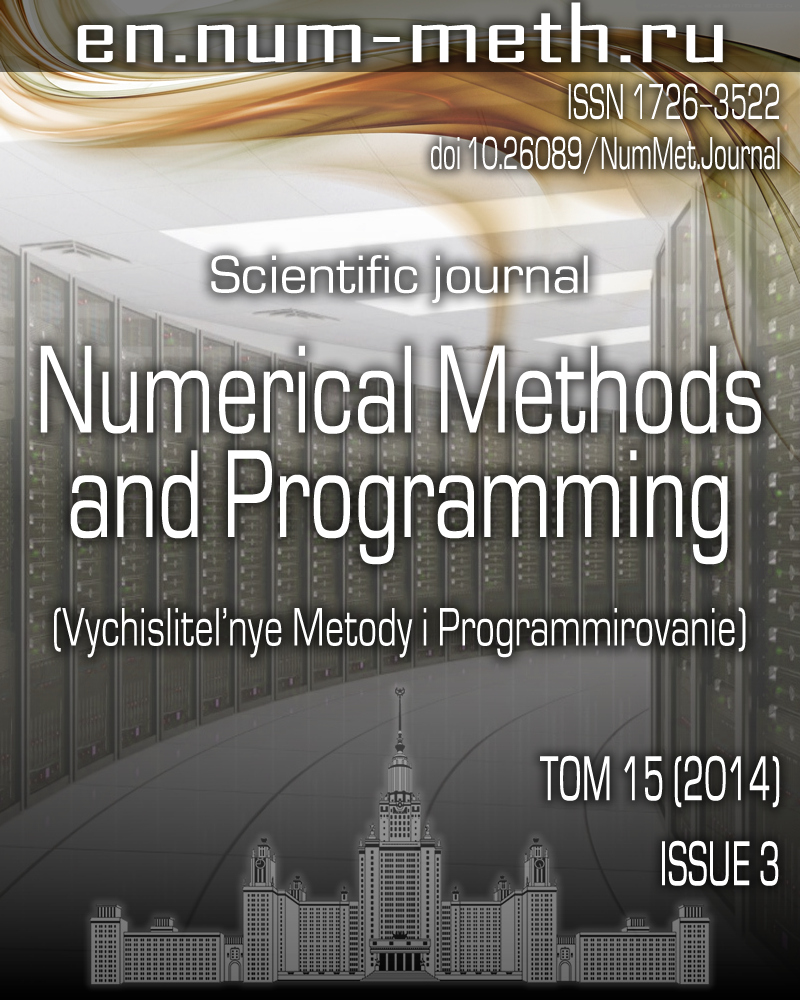Particle-in-cell plasma simulation using Intel Xeon Phi coprocessors
Keywords:
plasma physics
particle-in-cell method
high-performance computing
Xeon Phi
performance optimization
Abstract
A high performance implementation of particle-in-cell methods for laser plasma simulation is considered. The PICADOR code is used. An efficient utilization of the new Intel Xeon Phi coprocessors is discussed. It is shown that a code optimized well for traditional CPUs is not always efficient on coprocessors without additional optimization. A number of ways for the performance optimization of numerical plasma simulation are analyzed. The results of computing experiments show 1.8 times speed up on Xeon Phi compared to an optimized code on CPU.
Published
2014-09-05
Issue
Section
Section 1. Numerical methods and applications
References
- Бэдсел Ч., Ленгдон А. Физика плазмы и численное моделирование. М.: Энергоатомиздат, 1989.
- Fonseca R.A., Vieira J., Fiuza F., Davidson A., Tsung F.S., Mori W.B., Silva L.O. Exploiting multi-scale parallelism for large scale numerical modelling of laser wakefield accelerators // Plasma Physics and Controlled Fusion. 2013. 55, N 12. doi:10.1088/0741-3335/55/12/124011.
- Pukhov A. Three-dimensional electromagnetic relativistic particle-in-cell code VLPL (Virtual Laser Plasma Lab) // Journal of Plasma Physics. 1999. 61, N 3. 425-433.
- Bowers K.J., Albright B.J., Yin L., Daughton W., Roytershteyn V., Bergen B., Kwan T.J. T. Advances in petascale kinetic plasma simulation with VPIC and Roadrunner // J. Phys.: Conf. Ser. 2009. 180, N 1. doi:10.1088/1742-6596/180/1/012055.
- Burau H., Widera R., Hönig W., et al. PIConGPU: a fully relativistic particle-in-cell code for a GPU cluster // IEEE Transactions on Plasma Science. 2010. 33, N 10. 2831-2839.
- Bastrakov S., Donchenko R., Gonoskov A., Efimenko E., Malyshev A., Meyerov I., Surmin I. Particle-in-cell plasma simulation on heterogeneous cluster systems // Journal of Computational Science. 2012. 3, N 6. 474-479.
- Бастраков С.И., Мееров И.Б., Сурмин И.А., Гоносков А.А., Ефименко Е.С., Малышев А.С., Ширяев М.А. Динамическая балансировка в коде PICADOR для моделирования плазмы // Вычислительные методы и программирование. 2013. 14. 67-74.
- Bastrakov S., Meyerov I., Surmin I., Efimenko E., Gonoskov A., Malyshev A., Shiryaev M. Particle-in-cell plasma simulation on CPUs, GPUs and Xeon Phi coprocessors // Lecture Notes in Computer Science. Vol. 8488. Heidelberg: Springer, 2014. 513-514.
- Jeffers J., Reinders J. Intel Xeon Phi coprocessor high performance programming. Waltham: Morgan Kaufmann, 2013.
- Taflove A. Computational electrodynamics: the finite-difference time-domain method. London: Artech House, 1995.
- Berenger J.-P. A perfectly matched layer for the absorption of electromagnetic waves // Journal of Computational Physics. 1994. 114, N 2. 185-200.
- Esirkepov T.Zh. Exact charge conservation scheme for particle-in-cell simulation with an arbitrary form-factor // Computer Physics Communications. 2001. 135, N 2. 144-153.
- Decyk V.K., Singh T.V. Particle-in-cell algorithms for emerging computer architectures // Computer Physics Communications. 2014. 185, N 3. 708-719.


